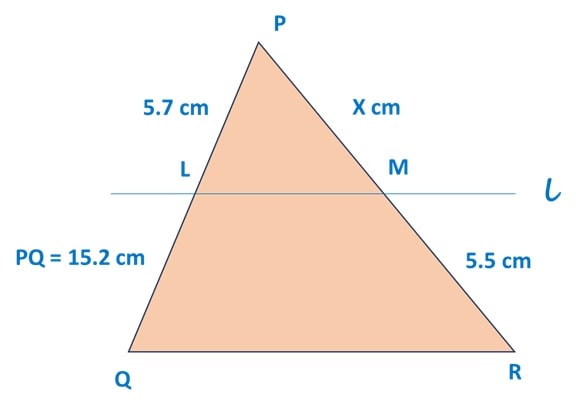Q) Prove that if a line is drawn parallel to one side of a triangle to intersect the other two sides in distinct points, the other two sides are divided in the same ratio.
Hence in ΔPQR, prove that a line ℓ intersects the sides PQ and PR of a ∆ PQR at L and M respectively such that LM II QR. If PL = 5.7 cm, PQ = 15.2 cm and MR = 5.5 cm, then find the length of PM (in cm).
Q33 – Sample Question Paper – Set 1 – Maths Standard – CBSE 2026
Ans:
(i) Proving: This is Basic Proportionality Theorem (BPT).
VIDEO SOLUTION
STEP BY STEP SOLUTION
Click here to check step by step writing method to prove.
Read it carefully !
(ii) Finding value of PM:
Step 1: We have following information given: LM II QR, PL = 5.7 cm, PQ = 15.2 cm, MR = 5.5 cm

Since PQ = 15.2 cm and PL = 5.7 cm,
∴ LQ = PQ – PL
∴ LQ = 15.2 – 5.7 = 9.5 cm
Step 2: We know that according to BPT, if a line is drawn parallel to one side of a triangle to intersect the other two sides in distinct points, then the other two sides are divided in the same ratio.
∴ PL / LQ = PM / MR
∴ 5.7 / 9.5 = x / 5.5
∴ 3 / 5 = x / 5.5
∴ x = 3 x 5.5 / 5 = 3 x 1.1 = 3.3 cm
Therefore, the length of PM is 3.3 cm.
Please do press “Heart” button if you liked the solution
